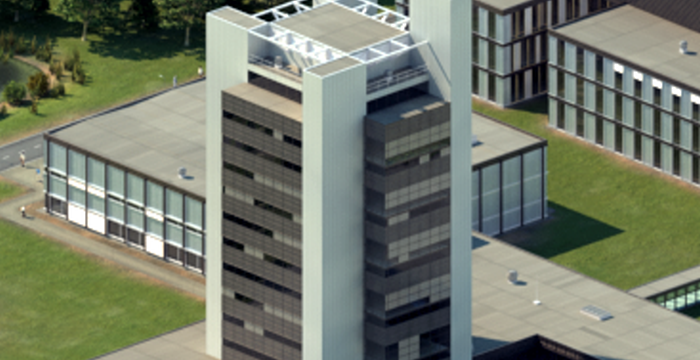Claas Willem Visser develops multi-scale functional materials, by converting fluid droplets or bubbles into solid "building blocks" and stacking these. The multi-scale nature of these materials enables optimizing their mechanical, acoustic, electrical, and biological properties for various applications.
From 2016 to 2018, Visser worked as a Rubicon Post-Doctoral Fellow at the Harvard John A. Paulson School of Engineering and the Wyss Institute for Biologically Inspired Engineering. Here, he developed a new method for additive manufacturing of polymer foams in the lab of Prof. Jennifer A. Lewis.
Before that, as a post-doc at the University of Twente, Visser co-developed a new technology for particle fabrication and 3D printing named "In-air microfluidics". This technology is now commercialized in spinoff company IamFluidics, of which Visser is co-founder and chief scientific officer.
Visser pursued his Ph.D. (2011-2015) under the supervision of Prof. Chao Sun (now at Tsinghua University) and Prof. Detlef Lohse, in the Physics of Fluids group at the University of Twente. Here, he contributed to fundamental studies on micro-scale droplet impact as well as applications such as laser-induced transfer of metals and droplet-based cell deposition.
From 2006 to 2011, Visser worked at Tata Steel Research, Development, and Technology as a researcher and project leader. He initiated several national and international research projects on hot rolling of metal strip.
Visser received his MSc degree in Applied Physics from the University of Twente in 2006, and completed his internship in Prof. Ke-Qing Xia's group at the Chinese University of Hong Kong.
Organisations
My google scholar page shows my full publication record.
The Fluid Mechanics for Functional Material team creates new materials from scratch. Here, droplets or particles are used as "building blocks" that add functionality to 3D-printed pieces in programmable shapes.
Our research focuses on creating the right building blocks and stacking them into the right shape, for example by understanding and controlling the impact of micro-scale droplets [1,2]. Together with collaborators, this strategy has advanced multi-scale tissue engineering [3], rapid fabrication of complex particles for chemical reactions [3,4], and 3D printed micro-sensors in gold and platinum [5,6].
Upcoming projects will focus on aero-acoustic materials, thin-film flows, and foams. These projects are pursued in close collaboration with experts who have deep knowledge of the application field, either at the University of Twente, in companies or with (inter)national collaborators.
References:
[1] Visser, C.W., Frommhold, P., Mettin, R., Wildeman, S., Sun, C., & Lohse, D. (2015) “Dynamics of high-speed micro-drop impact: numerical simulations and experiments at frame-to-frame times below 100 ns.” Soft Matter, 11: 1708-1722
[2] Wildeman, S., Visser, C.W., Sun, C. & Lohse, D. (2016) “On the spreading of impacting drops”, Journal of Fluid Mechanics 805: 636-655.
[3] Visser, C.W., Kamperman, T., Karbaat, L.P., Lohse, D., Karperien, M. (2018), “In-air microfluidics enables rapid fabrication of emulsions, suspensions, and 3D modular (bio)materials”, Science Advances 4(1):eaao1175
[4] Kamperman, T., Trikalitis, V.D., Karperien, M., Visser, C.W., Leijten, J. (2018), “Ultrahigh-Throughput Production of Monodisperse and Multifunctional Janus Microparticles Using in-Air Microfluidics”, ACS Applied Materials & Interfaces
[5] Visser, C.W., Pohl, R., Romer, G.R.B.E., Sun, C., Huis in ‘t Veld, A.J., & Lohse, D. (2015) “Towards 3D printing of pure metals by picosecond laser-induced forward transfer.” Advanced Materials 27(27):4103-4108
[6] Luo, J., Pohl, R. Ma, Q., R¨omer, G.R.B.E., Sun, C., Lohse, D., Visser, C.W., (2017), “Printing functional 3D micro-devices by laser-induced forward transfer”, Small 1602553
Publications
Research profiles
Courses academic year 2023/2024
Courses in the current academic year are added at the moment they are finalised in the Osiris system. Therefore it is possible that the list is not yet complete for the whole academic year.
- 191199152 - Internship
- 195799152 - Internship
- 201400046 - Experimental Methods
- 202000035 - Multiscale Functional Materials
- 202000138 - Fluid Mechanics 1
- 202000139 - Heat Transfer
- 202000140 - Proj. Fluids Engineering & Ac. Skills 7
- 202000245 - Experimental methods Fluid&Thermal eng.
- 202000249 - Master Graduation Assignment
- 202000250 - Internship
- 202100080 - 3D bioprinting
- 202300353 - Internship (CSE/SET)
Courses academic year 2022/2023
- 191199152 - Internship
- 195799152 - Internship
- 201400046 - Experimental Methods
- 202000035 - Multiscale Functional Materials
- 202000138 - Fluid Mechanics 1
- 202000139 - Heat Transfer
- 202000140 - Proj. Fluids Engineering & Ac. Skills 7
- 202000245 - Experimental methods Fluid&Thermal eng.
- 202000250 - Internship
- 202100080 - 3D bioprinting
Address

University of Twente
Horst Complex (building no. 20), room N250
De Horst 2
7522 LW Enschede
Netherlands
University of Twente
Horst Complex N250
P.O. Box 217
7500 AE Enschede
Netherlands